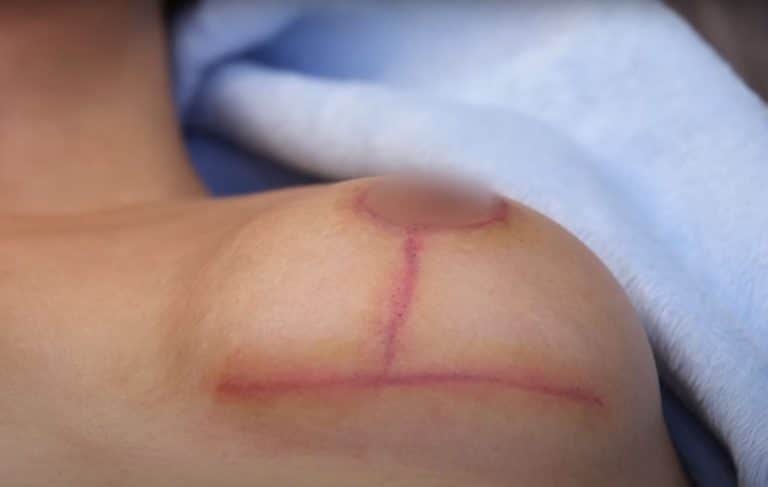Beyond Expectations: What to Know About Breast Implant Removal Procedures
Deciding to undergo breast implant removal is a significant health choice influenced by various personal and medical factors. This procedure, while less discussed than breast augmentation, carries its own complexities and considerations. Our focus here is to provide essential insights into the process, from understanding reasons for extraction to anticipating post-surgical outcomes. With clarity and precision, we delve into what patients can expect before, during, and after removing breast implants—ensuring informed decisions that align with individual well-being.
Understanding Reasons for Breast Implant Removal
Health Concerns
Breast implants are not lifetime devices. Over time, health issues may prompt removal. One serious concern is an implant rupture, where the shell breaks down and contents leak into the surrounding tissue. This can lead to inflammation or changes in breast shape.
Another issue is capsular contracture. The body forms a scar tissue capsule around the implant as a natural defense mechanism. If this capsule tightens, it can cause pain and distort the appearance of the breast.
Personal Preference
Tastes change over time. Some women decide their implants no longer fit their desired body image. They might want smaller breasts, a more natural look, or no implants at all.
Changes in lifestyle or personal circumstances often influence this decision as well. For instance, after having children or losing weight, one’s body image goals may shift significantly.
Physical Discomfort
Implants can cause discomfort for some women. This might include back pain from carrying extra weight on the chest or shoulder indentations from bra straps supporting heavy breasts.
Physical activities like running or jumping could become painful with larger implants, leading to a decision to have them removed for comfort and improved mobility.
Preparing for Breast Implant Removal Surgery
Medical Evaluations
Before breast implant removal, doctors often require specific medical tests. These ensure your safety during the procedure. You might need blood work or imaging of your chest area.
The purpose is to check for issues like excess fluid around implants or changes in the chest wall and muscle. This helps tailor the surgery to your needs.
Medication Guidance
Your surgeon will give you instructions on medications before surgery. Some drugs thin your blood and must be stopped temporarily. It’s crucial to follow these guidelines closely.
You’ll also receive fasting instructions to reduce risks during anesthesia. Usually, no eating or drinking is allowed several hours prior to surgery.
Support Arrangements
After surgery, you won’t be able to drive yourself home due to anesthesia effects. Arrange for someone trustworthy for transportation and support at home as you recover.
This help ensures a smooth transition from hospital care back into daily life without compromising healing.
Anesthesia and Incision Techniques in Explant Surgery
Anesthesia Options
After preparing for breast implant removal, patients must understand the anesthesia options. General anesthesia renders a patient unconscious during surgery. It is often preferred for complex cases or when a patient requests not to be aware of the procedure.
Another choice is local anesthesia, which numbs only the surgery area. Patients remain awake but should feel no pain. For those anxious about being unconscious, local anesthesia can be combined with sedation to help relax.
Incision Choices
The incision approach plays a crucial role in explant surgery outcomes. Surgeons typically use one of three main techniques: periareolar, inframammary, or transaxillary.
The periareolar method involves an incision around the edge of the areola, beneficial for concealing scars due to its placement along natural skin lines. The inframammary option places an incision under the breast fold and is commonly used due to easy access and low visibility when clothed.
Transaxillary incisions are made in the armpit area; this approach avoids scars on the breast itself but may not be suitable for all situations.
Surgeons aim for a flat closure where possible, ensuring that once healed, contours appear smooth and natural.
Scar Management
Managing scarring is important after choosing an incision technique. Surgeons will discuss scar placement strategies tailored to each individual’s experience and body type.
Effective minimization methods include precise surgical technique and post-operative care like silicone sheets or gels that can aid healing.
Patients should follow their surgeon’s guidance carefully to ensure optimal results with minimal scarring impact.
The Surgical Process of Removing Breast Implants
Removal Steps
After anesthesia, the surgeon begins the removal process. They carefully cut around the original incision to access the implant. This helps in reducing additional scarring on the breast. Next, they remove both implant and any accumulated scar tissue.

To ensure safety, surgeons perform a thorough inspection of surrounding tissues. If there’s damage or changes in tissue quality over years, this is addressed promptly.
Tissue Care
Preserving breast appearance is crucial during removal. Surgeons use specialized techniques to minimize damage to breast tissue and chest muscles.
They handle tissues gently and may reshape remaining breast tissue for a natural look post-removal. In some cases, surgeons apply protein-rich solutions that aid healing.
Implant Handling
The handling of the removed implant shell requires care. Surgeons examine it for signs of breakage or leakage which could affect patient health.
If replacement with a new implant is desired, options are discussed prior to surgery based on type and preference.
- Saline implants can be deflated before removal.
- Silicone implants require careful extraction intact to prevent silicone spread within chest area.
Surgeons provide photos showing before-and-after results from similar cases when discussing potential outcomes with patients.
Recovery and Aftercare Following Implant Removal
Healing Timeline
After the surgical removal of breast implants, patients enter a recovery period. Initially, rest is crucial. For the first 24 to 48 hours, patients should limit movement to promote healing. Gradually, activities can be resumed based on doctors’ advice.
The full recovery timeline varies. Most return to normal routines within two weeks. However, complete internal healing may take several months.
Incision Care
Post-surgery care for incisions is key to prevent infection. Patients must keep the area clean and dry. Dressings should be changed according to instructions from healthcare providers.
Signs of infection include redness, swelling or discharge at the incision site. If these occur, contacting a doctor immediately is important.
Pain Management
Managing pain after implant removal involves medications prescribed by doctors and home remedies like ice packs or gentle massage around the affected area—never directly on incisions.
Patients also need regular follow-up appointments with their surgeons to monitor recovery progress and address any concerns that arise during this phase.
Risks and Complications Associated with Explant Procedures
Surgical Risks
Breast implant removal can lead to bleeding. This is a common risk during surgeries. Infection is another potential issue. It can cause redness, pain, or swelling. Patients might react badly to anesthesia too. Symptoms include dizziness, nausea, or allergic reactions.
Sensation Changes
After explant procedures, breast sensation may change. Some women report less feeling in the area. The shape of breasts often alters as well. They might look uneven or sag more than before.
Aesthetic Concerns
Many seek implant removal for health or personal reasons. Yet they may not like how their breasts look afterward. Dissatisfaction with appearance sometimes leads to additional surgeries.
To summarize these points:
- Surgery carries risks like bleeding and infection.
- Anesthesia has its own set of dangers.
- Sensation and shape changes are possible after surgery.
- The final look of the breasts might require further operations if dissatisfaction occurs.
These complications highlight the importance of understanding all aspects before deciding on an explant procedure.
Cost and Insurance Considerations for Implant Removal
Surgery Expenses
Breast implant removal costs can vary. On average, the price ranges from a few thousand to several thousand dollars. The final cost depends on multiple factors.
Surgeon experience is one key factor. More experienced surgeons typically charge higher fees. Yet, their expertise might lead to better outcomes. The location of the surgery also impacts the cost. Some cities or regions have higher medical service rates than others.
Another aspect affecting price is surgical complexity. Simple removals are less costly than those requiring additional procedures like a lift or reconstruction.
Insurance Coverage
Insurance coverage for implant removal varies greatly and often hinges on whether it’s medically necessary.
If implant complications arise, such as rupture or capsular contracture, insurance may cover the procedure. Medical necessity must be proven with documentation from healthcare providers. For cosmetic reasons alone, insurance usually does not cover explant surgeries.
Patients should consult their insurance provider early in the process to understand coverage specifics.
Choosing a Qualified Surgeon for Breast Implant Removal
Board Certification
When selecting a surgeon for breast implant removal, board certification is crucial. This ensures the doctor has completed rigorous training in plastic surgery. Look for surgeons certified by reputable organizations like the American Board of Plastic Surgery.
Patients should verify their chosen provider’s credentials. Check if they are legally permitted to perform these surgeries. It’s not just about having a medical degree; specialized training matters.
Surgeon Experience
Experience with explant procedures is equally important. Ask how many breast implant removals the surgeon has performed. More experience often means better outcomes.
Many women seek surgeons who frequently handle such cases. They want someone skilled in this specific area of plastic surgery.
Patient Testimonials
Testimonials from previous patients can offer insights into what to expect. These personal accounts reflect on the surgeon’s work and patient care quality.
Before-and-after photos provide visual evidence of results achieved by the surgeon’s hands-on experience with other people undergoing similar procedures.
Conclusion
Breast implant removal is a significant decision influenced by various personal and medical factors. This article has thoroughly examined the journey from understanding the reasons for explant surgery to choosing a qualified surgeon. It has also detailed the preparation, surgical techniques, recovery expectations, potential risks, and financial considerations. These insights underscore the importance of informed decision-making and highlight the complexity of explant procedures.
For individuals contemplating this step, it is crucial to consult with a board-certified plastic surgeon who can provide personalized guidance. By doing so, patients can navigate their breast implant removal journey with confidence and support. If you’re considering explant surgery or seeking more information, take action by scheduling a consultation with a healthcare professional who specializes in breast surgery.
Frequently Asked Questions
What are common reasons for breast implant removal?
Breast implant removal is often considered due to medical reasons such as capsular contracture, implant rupture or leakage, and infection. Personal preferences, including aesthetic changes or the desire to return to natural breast size, also play a role.
How should I prepare for breast implant removal surgery?
Preparation involves consulting with your surgeon about expectations and post-surgery care. Preoperative tests may be required. It’s important to stop smoking and avoid certain medications that could increase bleeding risk before surgery.
What anesthesia is used during explant surgery?
Explant surgeries typically use general anesthesia or intravenous sedation depending on the complexity of the procedure and patient preference. Your surgeon will determine the safest option for you.
Can you explain the surgical process of removing breast implants?
The surgical process generally includes making an incision, usually at the site of the original scar, followed by careful dissection and removal of the implant and any necessary surrounding tissue like capsule material.
What does recovery look like after implant removal?
Recovery involves rest with limited movement to facilitate healing. Expect soreness, swelling, and bruising initially. Follow your surgeon’s guidelines regarding activity levels and when it’s safe to resume normal activities.
Are there risks associated with explant procedures?
Like all surgeries, risks include infection, bleeding, scarring, changes in nipple sensation or contour irregularities. Discuss potential complications thoroughly with your surgeon prior to surgery.
Does insurance cover breast implant removal costs?
Insurance coverage varies widely; it may cover costs if explantation is medically necessary but likely not for cosmetic reasons alone. Check with your insurer about specific policy details related to this procedure.






